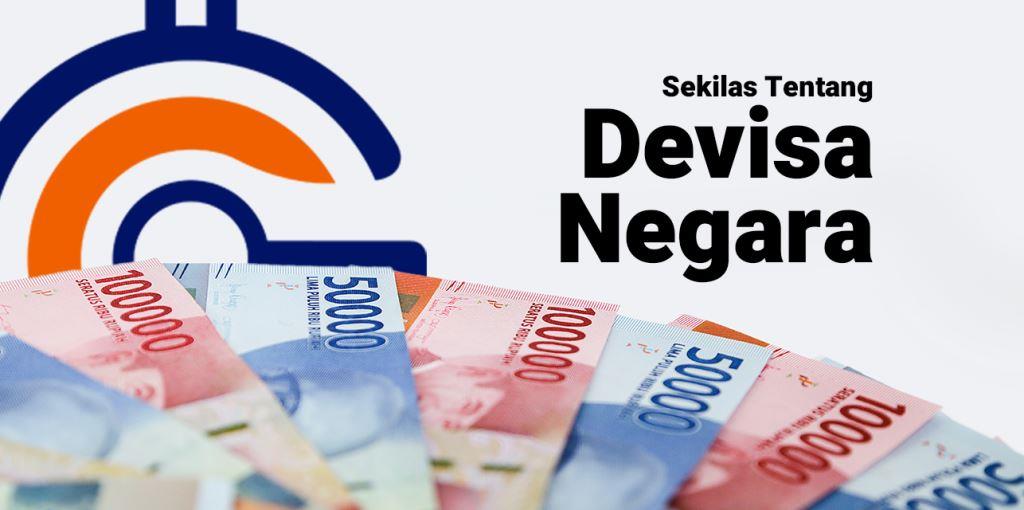What is a country's foreign exchange?
In every international trade, it will require an agreement from the applicable means of payment to buy and sell internationally, one of which is by using foreign exchange means of payment. Therefore, in every country that wants or has done international trade, it is appropriate for that country to have a means of foreign exchange payment. According to Law Number 24 of 1999 concerning Foreign Exchange Traffic and the Exchange Rate System, it has been written that foreign exchange is one of the tools and sources of financing for the nation and state. Meanwhile, according to the Great Dictionary of Indonesian (KBBI), the country's foreign exchange is a tool to make foreign payments that can be exchanged for foreign money. Foreign exchange reserves or in English are also called foreign exchange reserves which are deposits of the central bank and also the monetary authority. Indonesia's central bank is Bank Indonesia. Meanwhile, Indonesia's monetary authorities are Bank Indonesia, the Ministry of Finance, and the National Development Planning Agency (Bappenas). A country that will be able to fund all imports using foreign exchange reserves is a sign that the financial sector in the country is running steadily so that the country can conduct an international trade and also expand their production market. If there is a country that only has foreign exchange reserves and is getting smaller, it is a sign that the country is not able to produce this foreign exchange. Therefore, a country must be able to maintain their foreign exchange reserves well so that in the future it can also make a good impression on its own country and other countries. Basically, foreign exchange reserves and the domestic economy will be interconnected so that they can affect each other's values. If the domestic economy is weakening, foreign exchange reserves can decrease. Likewise vice versa, if the economy is improving, then this foreign exchange reserve will later increase. So that way, the domestic economy must be managed properly and also comprehensively so that later the reserves in this foreign exchange can continue to experience an increase.Function
There is a function of foreign exchange that you can use as an indicator of the economic strength of a nation. In addition, other functions of foreign exchange are:International Trade Payment Instruments
Foreign exchange is also able to help carry out the process of international trade transactions or what is commonly called import and export. In other words, foreign exchange can also be used as a second currency or second currency in a country when trading with other countries.International Relations Financing Tools
When conducting a relationship between countries, of course each country will require a certain cost. Financing for various kinds of operations that will be related to the international world certainly comes from the country's foreign exchange. For example, such as diplomatic activities between countries, official trips to other countries, or other activities related to foreign countries.
Foreign Debt Payment Instruments
A country must be able to use the wealth they have for various economic interests in the country, such as to accelerate development or pay a foreign debt bill. Therefore, this foreign exchange can also be used as a tool to pay foreign debts.
Source of State Revenue
In addition to being able to be used as a source of foreign debt payments, this foreign exchange also has another function that is one of the sources for state finances. In this case, foreign exchange will be useful for national development and also economic improvement in a country.Source
Foreign exchange in each country will certainly require a very large cost. If a country has excelled in the tourism sector, then the country can maximize the growth of their tourism sector so that later many tourists from abroad or local tourists will come and the country can get a high source of foreign exchange from the tourism sector. This high source of foreign exchange will later maintain the stability of the foreign exchange reserves owned by a country. The country's sources of foreign exchange are:Export Activities of Goods and Services
Export activities both using goods and services are one of the sources for foreign exchange funds that the state can rely on. Because from this activity, a country can get many benefits that will be obtained for the foreign exchange, such as by introducing a superior product that will be sold at a competitive price. That way, the more goods and services have been exported, the income in a country can continue to increase so that the country's foreign exchange reserves will be stable and tend to continue to grow. Therefore, the government in a country certainly needs to be able to maximize all these export activities.Foreign Aid
Loans or assistance that originate from abroad will usually be in the form of money because money can be considered more meaningful as a form of foreign exchange source in the country. However, sometimes there are some countries that usually send aid in the form of goods. Assistance in the form of goods will also mean a lot to a country, but it can only be used to save foreign exchange. This is because a country that has been given assistance in the form of goods does not need to spend foreign exchange reserves or money to be able to buy these goods.Private Funding
Sometimes, usually in some countries that have used funds from the private sector, they use it as a source of foreign exchange. The source of foreign exchange provided can be in the form of money or investment for development so that when you want to build something, the state will not need to spend a fund. An example of development carried out by the private sector is the Integrated Modal Rata (MRT).External Debt
For some developing countries that have not been able to generate a foreign exchange reserve in a maximum way, they will need a loan from abroad. That way, this loan from abroad will later be recorded as a state debt as well as a source of reserves for the country's foreign exchange. Therefore, this loan must be used in the maximum way so that the foreign exchange reserves can remain stable and can also increase in value so that the country's debts can be paid using this foreign exchange.Tourism
There are several countries that have relied on this tourism sector as one of the sources of foreign exchange income, one of which is Indonesia. Tourism in Indonesia is already famous to foreign countries so of course there are a lot of tourists who want to travel to Indonesia. Bali is the most visited area by tourists in Indonesia because it has natural beauty that is certainly stunning. When doing this tour, foreign tourists will exchange their money to be used when visiting the country they visit. The money earned when tourists travel will later be used as one of the sources of foreign exchange in a country. The income from foreign exchange sources from the tourism sector will certainly increase if the tourists arriving from abroad will continue to increase.Import Duty
Goods that have come from abroad, when entering the country, will certainly be subject to an entrance fee. So this entry fee is often referred to as import duty or customs. This import duty is one of the sources for foreign exchange that has great potential. With the increasing number of goods entering the country, there will also be more income that will later be obtained by the country through the import duty sector. That way, a country is very necessary to be able to optimize the import duty sector because import duties are a source of foreign exchange and can also increase foreign exchange reserves.How to Upgrade
This increase in foreign exchange can be done in several ways. This method can be improved by optimizing all functions owned by this foreign exchange itself. Such as increasing investment from abroad, raising interest rates, increasing natural resources and human resources, building tourist attractions, improving the quality of export goods, and also exporting. The ways and steps to increase foreign exchange are:- In the oil or gas sector, the results of the Limited Meeting requested that Pertamina be able to buy all lifting from petroleum produced by Cooperation Contract Contractors (KKKS). Following up on this, the Head of the Bureau of Communication, Public Information Services, and also Cooperation (KLIK Bureau).
- The blending of biodiesel in fuel (B-20) took place on 1 September 2018. The Presidential Regulation will apply to both Fuel Public Service Obligation (PSO) and non-PSO.
- In order to increase coal exports, the government will open an additional coal export, which is 100 million tons. At this time, of the 100 million tons, the Minister of Energy and Mineral Resources has signed an initial additional approval for 25 million tons. With this addition, it is expected to increase foreign exchange up to US$1.5 billion.
- Encouraging the use of TKDN and domestic products for the upstream oil and gas industry and also electricity projects, as long as they are available in the country by not issuing a master list to be free of import duties
- Digitization of nozzles for fuels such as Fuel Oil (BBM), Certain Types (Solar), and also Special Assignment Fuel (Premium). The Ministry of Energy and Mineral Resources, through the Upstream Oil and Gas Regulatory Agency (BPH Migas) together with PT Pertamina (Persero) has collaborated with PT Telekomunikasi Indonesia (Persero) Tbk to be able to install digitization of nozzles at 5,518 Public Fuel Filling Stations (SPBU) that have been spread throughout Indonesia.
 Last:
Last: 







